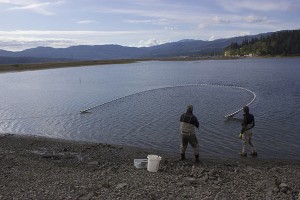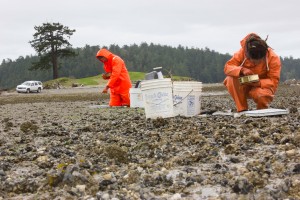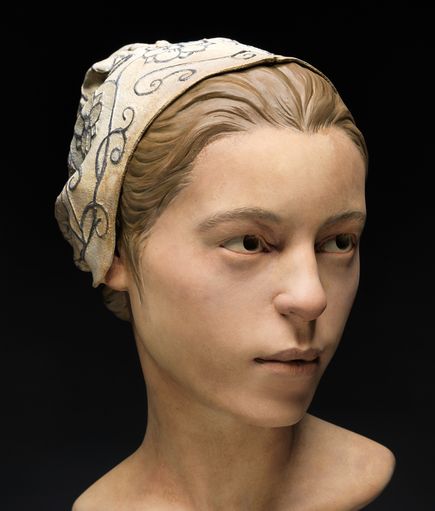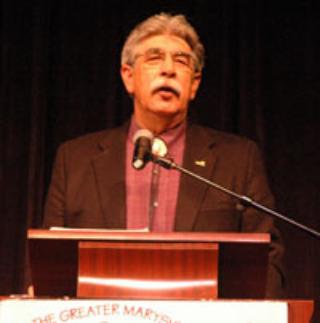By Monica Brown, Tulalip News Writer
TULALIP, Wash. – The Tulalip CEDAR (Community Engaged and Dedicated to Addiction Recovery) group invited Caleb Banta-Green, PhD to speak at their meeting on April 25, 2013. Banta-Green is the principle investigator on an overdose prevention program for Washington State and has dedicated time to developing a prevention program and educating communities about overdosing risks.
Often times an opiate overdose won’t occur until 3-4 hours after the person takes them. The person will be unresponsive, have shallow breathing that may sound like gasping or choking, and may be pale blue or grey in color. Banta-Green pointed out that rescue breathing can be done to prevent a potential fatality and suggests the first thing you need to do is look for signs of breathing and a heartbeat. If there is no heartbeat, perform CPR. If there is a heartbeat but the person is having trouble breathing or not breathing at all, begin the rescue breathing; “An opiate overdose is about oxygen; it’s about getting oxygen to the person’s brain and doing rescue breathing,” said Banta-Green.
Along with rescue breathing, Banta-Green suggests administering Naloxone. Naloxone, an opioid antagonist, is a prescribed medication that, once administered, blocks the person’s opioid receptors and allows the overdose victim to breathe normally for a short period of time. Depending on how much of the opioid the person has taken they may need to be given Naloxone every 30-90 minutes until they stabilize.
Naloxone can be given in the nose (intranasal spray) or in the muscle (intramuscular injection) and is safe to give even if the person is not overdosing on opioids. Since Naloxone is purely an opioid antagonist it has been approved to help binge eaters from splurging on fatty sweets like chocolate.
Washington State law (RCW 69.50.315) allows anyone at risk of having, or witnessing, an opioid drug overdose to obtain a prescription of naloxone. If you or your friends or family members use opioids medicinally or recreationally, you are able to obtain a prescription and carry it with you for emergencies. The CEDAR group is currently working with Tribal Police, Tulalip Pharmacy and the Health Clinic to start a prevention program at Tulalip which will offer prescriptions of Naloxone and training of how to give rescue breathing and administer Naloxone.
To find an overdose prevention program near you that gives prescriptions for Naloxone and training of how to administer, please visit this website: http://www.stopoverdose.org/faq.htm
Nearby locations in Washington that can help you if you are in need:
Adam Kartman, MD at Phoenix Recovery in Mt Vernon, Wash. Services provided: Anyone, including family and friends, who might be a first responder/good Samaritan to an opiate overdose who would like a prescription for intranasal naloxone and a free mucosal nasal atomizer is welcome to schedule a visit with Dr. Kartman at no charge. Native Americans and Alaskan Natives may be able to fill the prescriptions at no charge at tribal pharmacies. Others may get prescriptions filled at area pharmacies. Phone: 360-848-8437
Robert Clewis Center in Seattle, Wash. Services provided: Mon-Fri, 1:00-5:00 pm & Sat, 2:00-4:00 pm Walk-ins welcome. Harm reduction counseling/support, vein care, Naloxone/overdose prevention, case management. Facilitated access to methadone and other drug treatment, needle exchange, abscess treatment and care, HIV/hepatitis testing and counseling, Hepatitis A & B vaccinations, colds and upper respiratory infections andTB screening. Phone: 206-296-4649
The People’s Harm Reduction Alliance in Seattle, Wash. Services provided: We give out naloxone, crack kits, Hepatitis A and B vaccinations, safe disposal of used needles, access to new needles and clean supplies, referrals to other pertinent services such as detox and treatment options. Completely need-based program for syringe exchange and completely drug user run. Phone: 206-330-5777
What are opiates?
Heroin, morphine, oxycodone (Oxycontin), methadone, hydrocodone (Vicodin), codeine, and other prescription pain medications.
How to recognize and overdose.
The person overdosing can’t be woken through loud noises or pain, may have blue or gray lips and fingernails, they will have slow or shallow breathing which may sound similar to gasping or snoring.
How to save someone from an overdose.
An overdose death may happen hours after taking drugs. If a bystander acts when they first notice a person’s breathing has slowed, or when they can’t awaken a user, there is time to call 911, start rescue breathing (if needed) and give naloxone.
1. Rub to wake.
- Rub you knuckles on the bony part of the chest (the Sternum) to try to get them to wake up or breathe.
2. Call 911. – All you need to say is :
- The address and where to find the person
- A person is not breathing
- When medics come tell them what drugs the person took if you know
- Tell them if you gave naloxone
3. If the person stops breathing give breaths mouth-to-mouth or use a disposable breathing mask.
- Put them on their back.
- Pull the chin forward to keep the airway open; put one hand on the chin, tilt the head back, and pinch the nose closed.
- Make a seal over their mouth with yours and breathe in two breaths. The chest, not the stomach, should rise.
- Give one breath every 5 seconds.
4. Give Naloxone
- For injectable naloxone: Inject into the arm or upper outer top of thigh muscle, 1 cc at a time. Always start from a new vial.
- For intranasal naloxone: Squirt half the vial into each nostril, pushing the applicator fast to make a fine mist.
- Discard any opened vials of naloxone within 6 hours (as recommended by the World Health Organization).
5. Stay with the person and keep them breathing
- Continue giving mouth-to-mouth breathing if the person is not breathing on their own.
- Give a second dose of naloxone after 2-5 minutes if they do not wake up and breathe more than about 10-12 breaths a minute.
- Naloxone can spoil their high and they may want to use again. Remind them naloxone wears off soon and they could overdose again.
6. Place the person on their side
- People can breathe in their own vomit and die. If the person is breathing, put them on their side. Pull the chin forward so they can breathe more easily. Some people may vomit once they get naloxone; this position will help protect them from inhaling that vomit.
7. Convince the person to follow the paramedics’ advice.
If the paramedics advise them to go to the Emergency Room, health care staff will help:
- Relieve symptoms of withdrawal
- Prevent them from overdosing again today
- By having an observer who can give more naloxone when the first dose wears off
- Assess and treat the person for other drug overdoses. Naloxone only helps for opioids.
8. What if the police show up?
- The Washington State 911 Good Samaritan Drug Overdose Law lets bystanders give naloxone if they suspect an overdose.
- The law protects the victim and the helpers from prosecution for drug possession. The police can confiscate drugs and prosecute persons who have outstanding warrants from other crimes.















